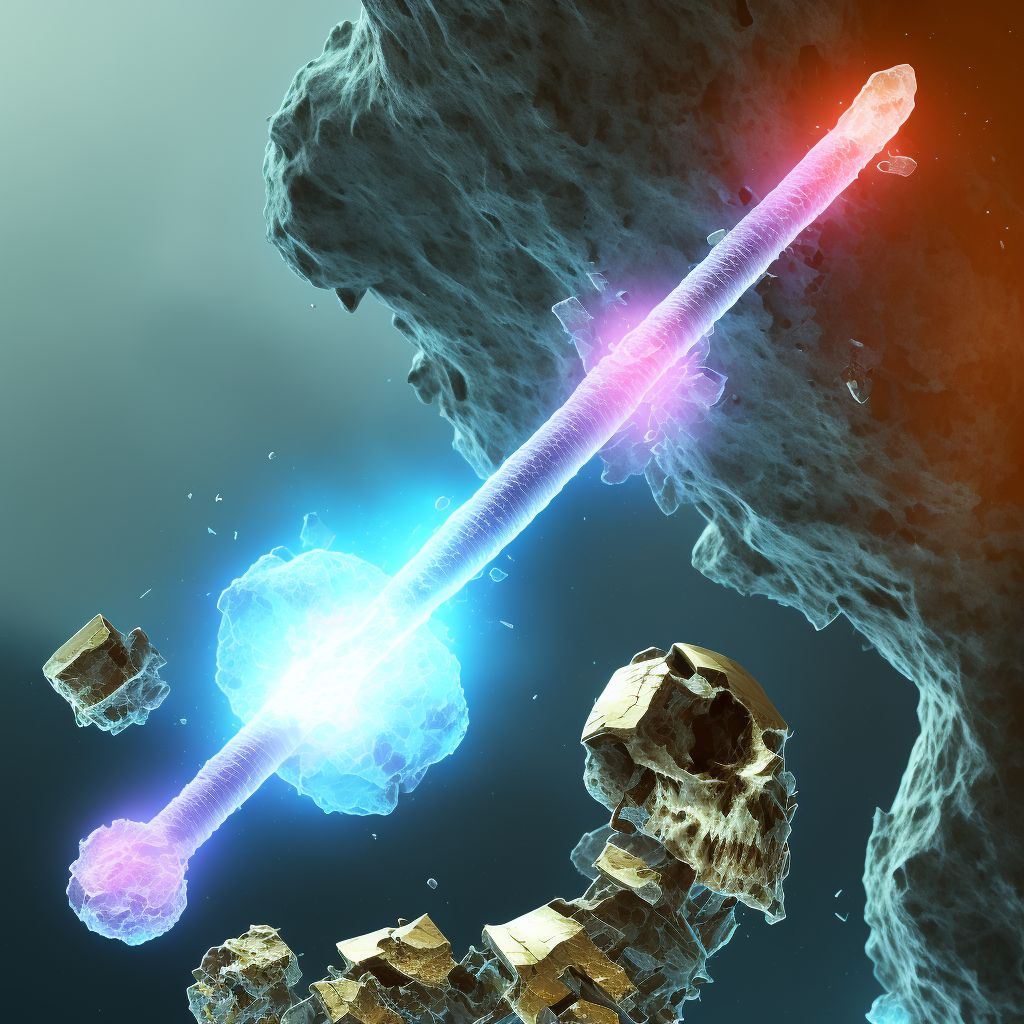
Nondisplaced transverse fracture of shaft of right fibula, subsequent encounter for open fracture type I or II with malunion Save
ICD-10 code: S82.424Q
Disease category: S82.424: Nondisplaced transverse fracture of shaft of right fibula
Nondisplaced Transverse Fracture of Shaft of Right Fibula: Understanding Malunion
A nondisplaced transverse fracture of the shaft of the right fibula refers to a specific type of bone break in the lower leg. This particular fracture occurs when the fibula, one of the two long bones in the lower leg, breaks horizontally across its shaft without any significant displacement. Although it may not require immediate surgical intervention, the subsequent encounter for an open fracture type I or II with malunion can pose challenges.
Malunion, in this context, refers to the improper healing of the fracture. It occurs when the broken bones fail to align properly during the healing process, resulting in an abnormal union. This can lead to functional limitations, pain, and altered biomechanics in the affected leg.
When encountering a nondisplaced transverse fracture of the right fibula, healthcare professionals must carefully evaluate the extent of malunion. This involves assessing the alignment of the bones, the presence of any deformities, and the patient's symptoms. Imaging studies such as X-rays or CT scans are commonly used to provide a detailed view of the fracture and to determine the severity of malunion.
To effectively manage malunion, healthcare providers may recommend various treatment options tailored to the patient's specific needs. These can include physical therapy, orthotic devices, or, in severe cases, surgical interventions. However, it is important to note that this article will not delve into the treatment options for malunion.
Despite malunion being a potential complication of a nondisplaced transverse fracture of the right fibula, it is essential to remember that each case is unique. The severity of the malunion and the individual patient's symptoms will dictate the appropriate course of action. Consulting with a qualified healthcare professional is crucial for an accurate diagnosis and optimal treatment plan.
- Understanding the nature of a nondisplaced transverse fracture of the right fibula
- Exploring the subsequent encounter for an open fracture with malunion
- Evaluating the severity of malunion through imaging studies
- Importance of tailored treatment options for malunion
- Seeking professional medical advice for accurate diagnosis and treatment
While a nondisplaced transverse fracture of the right fibula may seem straightforward, the subsequent encounter for an open fracture type I or II with malunion requires careful assessment and individualized management. By understanding the nature of this fracture and its complications, healthcare professionals can develop appropriate treatment strategies to help patients regain optimal functionality and improve their quality of life.
Treatment of Nondisplaced transverse fracture of shaft of right fibula, subsequent encounter for open fracture type I or II with malunion:
Treatment Options for Nondisplaced Transverse Fracture of Shaft of Right Fibula, Subsequent Encounter for Open Fracture Type I or II with Malunion
When dealing with a nondisplaced transverse fracture of the shaft of the right fibula, subsequent encounter for open fracture type I or II with malunion, it is crucial to explore the available treatment options. Proper management of this...
To see full information about treatment please Sign up or Log in